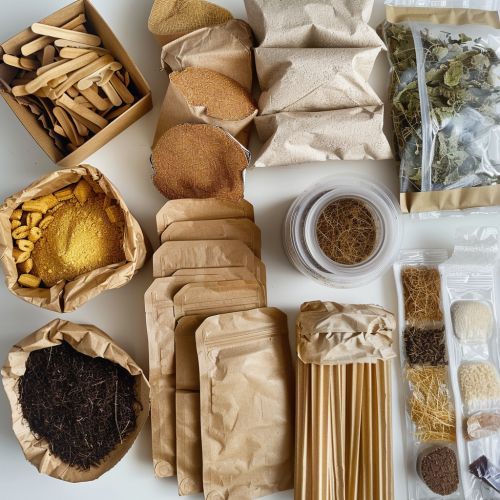Biodegradable Packaging
Introduction
Biodegradable packaging refers to a method of packaging that employs materials which can be broken down naturally and safely to be absorbed into the ecosystem. This type of packaging is designed to be more environmentally friendly than traditional packaging materials, such as plastic and Styrofoam, which can take hundreds of years to decompose and can be harmful to wildlife and the environment.
History
The concept of biodegradable packaging has been around for several decades, but it has gained significant attention in recent years due to increasing concerns about the environmental impact of traditional packaging materials. The first biodegradable packaging materials were developed in the 1970s and 1980s, but they were not widely adopted due to their high cost and limited functionality. However, advancements in technology and a growing awareness of environmental issues have led to a resurgence in the use of biodegradable packaging in the 21st century.


Materials
There are several types of materials that can be used to create biodegradable packaging. These include:
- Polylactic Acid (PLA): This is a type of plastic that is made from renewable resources, such as corn starch or sugar cane. PLA is biodegradable and can be composted at commercial composting facilities.
- Starch-based Plastics: These are plastics that are made from starch, a renewable resource. Starch-based plastics are biodegradable and can be composted.
- Paper: Paper is a naturally biodegradable material that has been used for packaging for centuries. Modern paper packaging can be coated with a biodegradable plastic to make it waterproof and more durable.
- Mushroom Packaging: This is a type of packaging that is made from mycelium, the root structure of mushrooms. Mushroom packaging is biodegradable and can be composted.
Production Process
The production process for biodegradable packaging varies depending on the type of material being used. For example, the process for producing PLA involves fermenting plant sugars to create lactic acid, which is then polymerized to create PLA. The process for producing starch-based plastics involves extracting starch from plants and then treating it with heat and/or chemicals to create a plastic-like material.
Benefits
There are several benefits to using biodegradable packaging, including:
- Environmental Impact: Biodegradable packaging has a lower environmental impact than traditional packaging materials. It is made from renewable resources and can be composted, which reduces the amount of waste that ends up in landfills.
- Energy Efficiency: The production of biodegradable packaging typically requires less energy than the production of traditional packaging materials.
- Reduced Carbon Footprint: Because biodegradable packaging is made from plant-based materials, it helps to reduce the amount of carbon dioxide that is released into the atmosphere.
Challenges
Despite its benefits, there are also several challenges associated with biodegradable packaging. These include:
- Cost: Biodegradable packaging is often more expensive to produce than traditional packaging materials. This can make it less attractive to businesses that are looking to cut costs.
- Durability: While some biodegradable packaging materials are quite durable, others are not as strong or durable as traditional packaging materials. This can limit their use in certain applications.
- Composting Facilities: Not all areas have access to commercial composting facilities, which are needed to properly compost some types of biodegradable packaging.
Future Trends
The future of biodegradable packaging looks promising, with ongoing research and development aimed at improving the performance and reducing the cost of biodegradable packaging materials. There is also a growing trend towards the use of biodegradable packaging in the food and beverage industry, as consumers become more aware of the environmental impact of their purchasing decisions.
